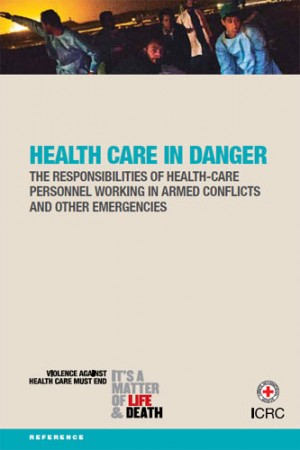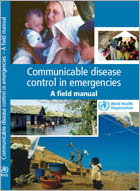Disaster Management
Original Editor - Your name will be added here if you created the original content for this page.
Top Contributors - Naomi O'Reilly, Tony Lowe, Kim Jackson, Admin, Rachael Lowe, Vidya Acharya, Tarina van der Stockt, WikiSysop, Selena Horner, Laura Ritchie and Jess Bell
Introduction[edit | edit source]
Types of Disaster[edit | edit source]
Disaster Prevention[edit | edit source]
Disaster Preparedness[edit | edit source]
Disaster Relief[edit | edit source]
Disaster Recovery[edit | edit source]
Disaster Guidelines[edit | edit source]

|
A Guidance Document in simple language for health personnel, setting out their rights and responsibilities in conflict and other situations of violence. It explains how responsibilities and rights for health personnel can be derived from international humanitarian law, human rights law and medical ethics. The document gives practical guidance on:
|

|
Minimum Technical Standards and Recommendations for Rehabilitation: Emergency Medical Teams This document is the result of collaboration between a working group of rehabilitation experts convened by WHO and external consultations. It is thus based on collective experience in rehabilitation during responses to recent large-scale emergencies and also on published data. In time, the minimum standards for rehabilitation in emergencies will be part of a broader series of publications based on the Classification and minimum standards for foreign medical teams in sudden onset disaster. The purpose of this document is to extend these standards for physical rehabilitation and provide guidance to Emergency Medical Teams (EMTs) on building or strengthening their capacity for and work in rehabilitation within defined coordination mechanisms.The standards and recommendations given in this document will ensure that EMTs, both national and international, will better prevent patient complications and ensuing impairment and ensure a continuum of care beyond their departure from the affected area. |

|
Communicable Disease Control in Emergencies - A Field Manual This manual is intended to help health professionals and public health coordinators working in emergency situations prevent, detect and control the major communicable diseases encountered by affected populations. |
Resources[edit | edit source]
Recent Related Research (from Pubmed)[edit | edit source]
Extension:RSS -- Error: Not a valid URL: Feed goes here!!|charset=UTF-8|short|max=10
References[edit | edit source]
References will automatically be added here, see adding references tutorial.






